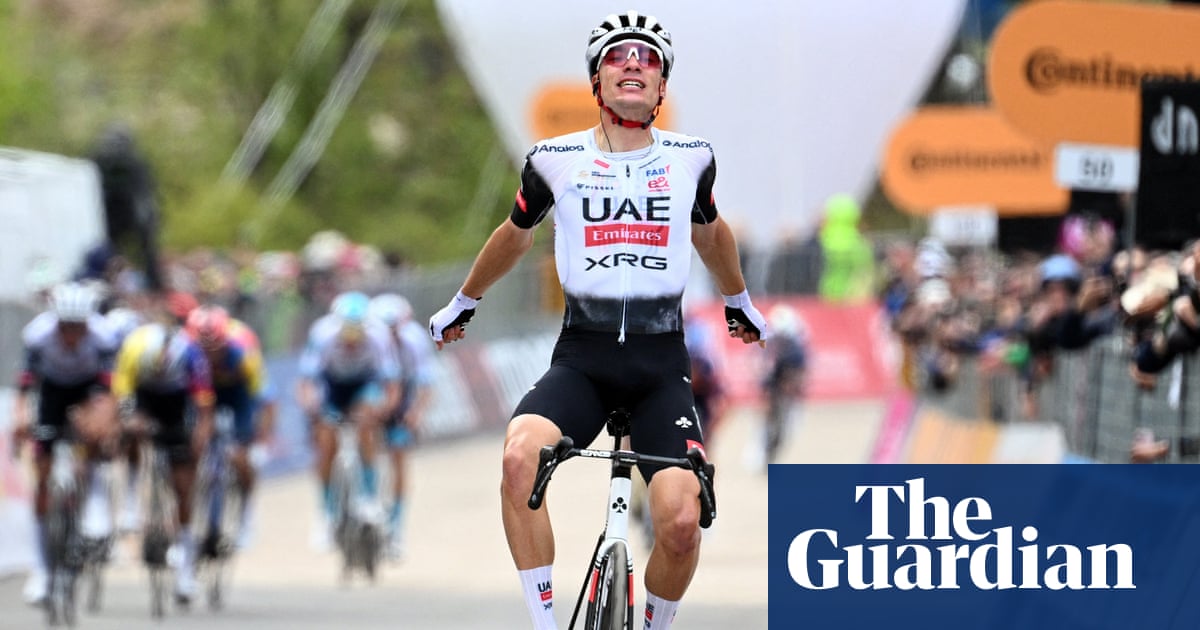The report on the Giro d’Italia highlights the competitive dynamics of the cycling race, particularly focusing on the performance of Juan Ayuso and Primoz Roglic. The stage results and the shifting standings in the general classification are indicative of the evolving nature of the competition. Analyzing this news piece reveals various layers regarding its intent, impact, and the broader context within which it operates.
Intent and Perception Management
The article aims to inform readers about the current state of the Giro d’Italia, particularly emphasizing the rivalry between Ayuso and Roglic. By showcasing Ayuso’s victory and Roglic's subsequent rise to the pink jersey, the report suggests a narrative of emerging talent challenging established champions. This could foster excitement among cycling fans and create a sense of anticipation for future stages. The news is likely designed to boost viewership and engagement with the event, emphasizing the drama and unpredictability inherent in competitive sports.
Underlying Narratives
The focus on Ayuso, a young rider, juxtaposed with Roglic, a seasoned champion, may subtly promote a narrative of youth versus experience, which is often appealing in sports journalism. This framing might resonate particularly well with younger audiences who see Ayuso as a representative of a new generation of athletes. By highlighting the close competition, the article builds a sense of urgency and importance around the race, potentially drawing in more viewers and fans.
Trustworthiness and Manipulation
The report appears factual, primarily outlining results and performances without overt manipulation. However, by emphasizing certain athletes and their stories, there could be an implicit bias towards creating a more compelling narrative. The language used is neutral, but the selection of what to highlight—such as Ayuso's victory—can influence public perception by prioritizing certain outcomes over others.
Connections with Other News
Compared to other sports news, this article maintains a focus on individual performances within a competitive framework. However, it does not delve into broader socio-political implications or controversies that might tie into other current events, keeping the narrative tightly centered on the race itself. In the context of cycling, this article reinforces ongoing themes of competition and athleticism, which are prevalent in other coverage.
Broader Implications
The excitement generated by such races can impact various sectors, from tourism in the regions involved to merchandising and sponsorship opportunities within the cycling industry. The performance of riders like Ayuso may draw attention to their teams and sponsors, potentially affecting market dynamics related to cycling gear and event promotions.
Audience Engagement
This report likely appeals to cycling enthusiasts, sports fans, and younger demographics interested in emerging talent. The portrayal of a competitive landscape with shifting loyalties and prospects provides a narrative that is engaging and relatable to these groups.
Financial Market Impact
While this particular news piece may not have direct implications for stock markets, it could influence the value of brands associated with the event or the athletes involved. For example, companies sponsoring prominent cyclists may see fluctuations in their public perception and, consequently, their stock values based on performance.
Global Relevance
Although the article focuses on a sporting event, the themes of competition and achievement resonate with broader societal narratives about perseverance and success. In today's context, where sports often serve as a global unifier, this event may have a role in fostering community spirit and engagement.
Use of AI in Reporting
There is no clear indication that AI was used in the writing of this article, but the structured presentation of results and athlete performances could suggest the influence of automated reporting systems in sports journalism. If AI were used, it might have streamlined the data presentation but would not typically influence the narrative style unless specifically programmed to do so.
The analysis suggests that while the report serves its purpose of informing and engaging the audience, it does so within a framework that emphasizes certain narratives over others, which may influence public perception in subtle ways.
